Solar Climate

How do climate models account for factors such as ocean currents, atmospheric pressure, and solar radiation ?
Climate models are complex mathematical representations of the Earth's climate system, designed to simulate and understand the behavior of various components such as ocean currents, atmospheric pressure, and solar radiation. These factors play a crucial role in shaping our planet's climate, and their interactions are essential for accurate climate predictions. Ocean currents act as conveyor belts for heat, moving it from the equator towards the poles and helping to regulate global temperatures. Climate models use fluid dynamics equations to simulate the movement of water in the oceans, and observations from satellites and buoys are integrated into models to improve the accuracy of ocean current simulations. Atmospheric pressure influences weather patterns and is a key driver of wind systems around the globe. Numerical Weather Prediction (NWP) Models solve the Navier-Stokes equations to simulate atmospheric pressure changes over time, while Global Climate Models (GCMs) incorporate principles of thermodynamics and fluid dynamics to predict how pressure variations will impact climate. Solar radiation provides the primary energy source that drives Earth's climate system. Radiative Transfer Models (RTMs) calculate how solar radiation interacts with the atmosphere and Earth's surface, while Spectral Irradiance Models estimate the amount of solar energy reaching Earth based on sunspot activity and other solar cycles. Coupled Models combine RTMs with atmospheric and oceanic models to understand the full impact of solar radiation on climate.
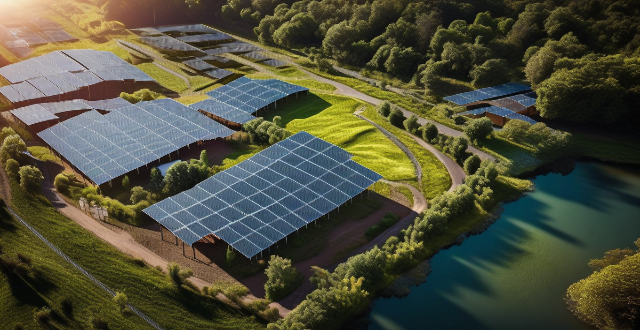
How does solar energy work ?
Solar energy is generated through the use of solar panels containing photovoltaic cells, which convert sunlight into electricity via the photovoltaic effect. This process involves absorbing sunlight, exciting electrons to a higher energy level, generating an electrical current, collecting it, and converting it into usable AC electricity. Solar energy is renewable, sustainable, cost-effective, and environmentally friendly, but its effectiveness can be reduced by weather conditions, and it requires additional equipment for energy storage. Despite high upfront costs, solar energy systems can lead to long-term savings on utility bills.

How do solar panels impact electricity bills in the long run ?
Solar panels can significantly reduce electricity bills over the long term by reducing energy consumption, increasing self-sufficiency, and taking advantage of net metering programs. While the initial cost of installation can be high, lower operating costs, federal tax credits, and increased home value can help offset these expenses. Additionally, solar panels offer environmental benefits such as reduced carbon emissions and support for renewable energy infrastructure.

What are the benefits of using solar power ?
Solar power is a renewable and sustainable energy source that offers numerous benefits. It can be cost-effective in the long run, environmentally friendly, promotes energy independence, has low maintenance costs, versatile applications, creates jobs, provides government incentives, increases property value, and enhances energy security. As technology advances and awareness grows about renewable energy sources like solar power, its adoption is expected to continue rising worldwide.

Is it possible to run my entire house on solar power alone ?
The possibility of powering an entire household with solar energy alone is influenced by various factors, including energy consumption habits, geographic location, available roof space, and system efficiency. Financial considerations, net metering policies, and maintenance requirements also play a role in determining the feasibility of such a setup. Homeowners should assess these elements and consider professional consultation to ascertain if their home can run solely on solar power.

Are there any government incentives for installing solar panels ?
Governments worldwide offer various incentives to encourage the adoption of solar energy, including tax credits and deductions, rebates, net metering, feed-in tariffs, grants, low-interest loans, green energy certificates, and solar rights laws. These incentives aim to reduce the upfront costs of installing solar panels and make renewable energy more accessible and financially viable for homeowners and businesses. However, eligibility requirements and application processes can vary, so it's essential to consult local professionals or agencies for specific information.

What are the advantages of using solar panels for residential and commercial purposes ?
Solar panels offer reduced energy costs, environmental benefits, increased property value, energy independence, low maintenance, and government incentives for residential and commercial use.
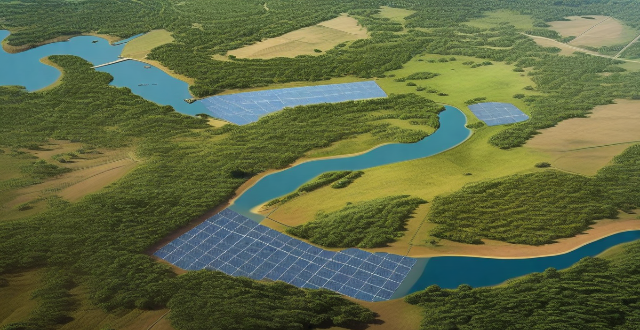
How long do solar panels typically last ?
Solar panels are a sustainable and cost-effective way to generate electricity. However, the lifespan of solar panels is an important factor to consider when making an investment in renewable energy. In this article, we will explore how long solar panels typically last and what factors can affect their lifespan. Solar panels are designed to last for several decades, with most manufacturers offering warranties of 25 years or more. However, the actual lifespan of a solar panel can vary depending on several factors, including the quality of materials used, the installation process, and environmental factors. The quality of the materials used in the manufacturing process can significantly impact the lifespan of a solar panel. Proper installation ensures that the panel is securely mounted and protected from potential damage caused by weather conditions or other external factors. Environmental factors such as temperature, humidity, and exposure to sunlight can also impact the lifespan of a solar panel. To ensure that your solar panels last as long as possible, it is essential to perform regular maintenance checks. This includes keeping the panels clean, checking for damage, and monitoring performance over time. By following proper maintenance practices and monitoring your solar panel's performance over time, you can ensure that your investment in renewable energy pays off in the long run.
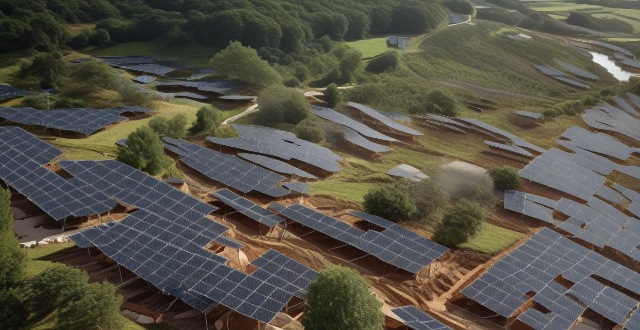
How does wind energy compare to solar energy ?
Wind energy and solar energy are both renewable sources of energy that have gained popularity in recent years. Wind turbines can generate electricity with high efficiency and low maintenance cost, while solar panels have a low initial cost and long lifespan. However, wind turbines can create noise pollution and have limited availability, while solar panels rely on sunlight and require a large amount of land. Both sources have their advantages and disadvantages, making them suitable for different applications.
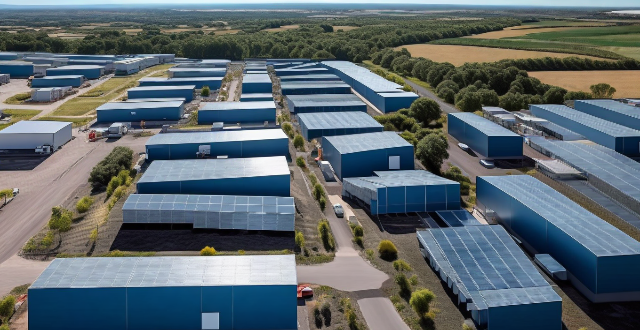
Can you explain the difference between photovoltaic and solar thermal energy ?
Solar energy harnesses the power of the sun to generate electricity or heat. Two major categories are photovoltaic (PV) and solar thermal systems, which differ in their conversion processes, applications, storage capabilities, efficiencies, and costs. PV systems convert sunlight directly into electricity using semiconductor materials like silicon, while solar thermal systems capture the sun's heat to warm a fluid, usually water or air, which then provides heat or generates electricity. PV is mainly used for generating electricity, and solar thermal is used for both heating and electricity generation. Solar thermal systems can more readily incorporate thermal storage solutions, while PV systems typically require battery storage for off-grid applications. The cost and affordability depend on the specific application and location, with PV becoming increasingly competitive in recent years.

How much does it cost to install a solar panel system ?
The cost of installing a solar panel system varies depending on the size, type of panels used, and installation location. Small residential systems typically range from $15,000 to $25,000 before tax credits or incentives, while medium to large residential systems can cost between $25,000 to $40,000. Commercial systems can vary greatly in size and cost. Monocrystalline silicon panels are the most efficient and expensive option, while thin-film solar panels are the least expensive but also less efficient. Rooftop installations are generally more expensive than ground-mounted installations. Additional costs include inverters, batteries, and installation fees. It is important to consult with a reputable solar installer for an accurate estimate based on specific needs and circumstances.
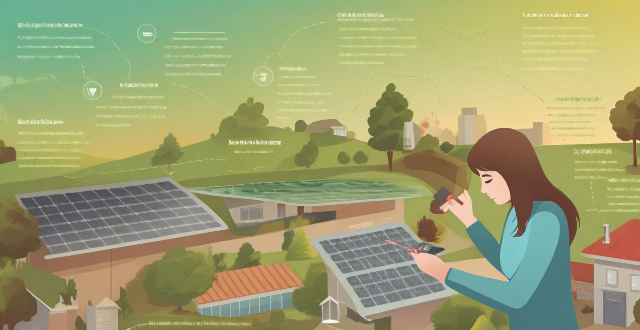
How can I maintain and clean my solar panels for optimal performance ?
The article discusses the importance of maintaining and cleaning solar panels to ensure their optimal performance. It provides a detailed guide on how to keep solar panels in top condition through regular inspection, cleaning, preventative measures, and safety precautions. The guide includes steps for visual inspection, checking for shading, monitoring production levels, dry and wet cleaning methods, using bird repellents and gutter guards, and routine maintenance. It also emphasizes the importance of wearing appropriate safety gear and taking precautions when working on or around solar panels. By following these steps, homeowners can extend the lifespan of their solar panels and maintain their efficiency over time.

How does solar power work and is it a viable option for homes ?
Solar power is generated through solar panels made of silicon cells that convert sunlight into direct current (DC) electricity. This process involves absorption of light, conversion to DC, conversion to alternating current (AC), and distribution throughout a home or business. Solar power is a viable option for homes due to its renewable nature, cost savings, environmental benefits, and government incentives. However, weather conditions, storage options, and upfront costs should also be considered before deciding if solar power is the right choice for your home.
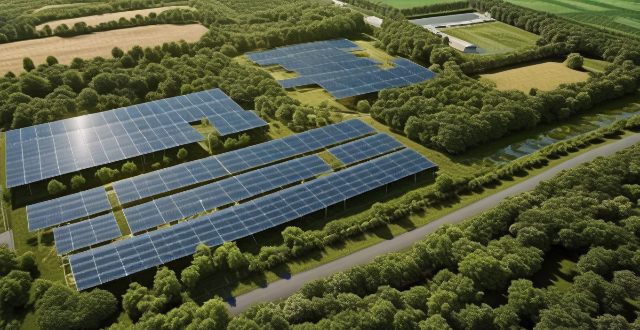
How does solar power generation work and is it a viable option for residential use ?
Solar power generation involves converting sunlight into electricity using solar panels, which are made up of photovoltaic cells. The process includes generating electricity, converting it from DC to AC, net metering, and battery storage. Solar power is a viable option for residential use due to its cost-effectiveness, energy independence, environmental benefits, increased property value, and technological advancements.

How do climate predictions account for natural climate variability ?
Climate predictions account for natural climate variability by incorporating natural drivers, using past climate records, ensemble modeling, focusing on long-term trends, assessing uncertainties, scenario analysis, and peer review and revision.
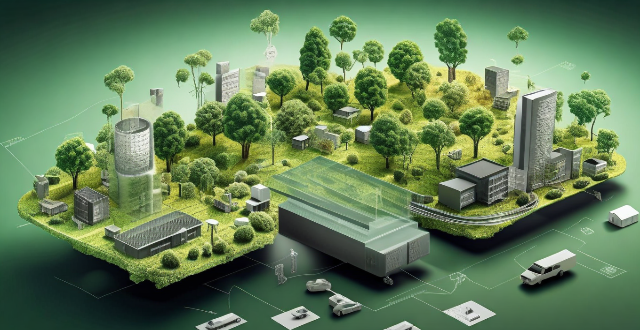
How can climate financing be used to mitigate and adapt to climate change ?
Climate financing is a key mechanism for both mitigating and adapting to the effects of climate change. It involves funding initiatives such as renewable energy projects, green transport, energy efficiency improvements, and research into cleaner technologies for mitigation. For adaptation, it supports infrastructure resilience, agricultural adjustments, health system strengthening, and community-based strategies. International cooperation through global climate funds and technology transfer further enhances the impact of climate finance. Collaboration among various stakeholders is crucial to effectively utilize climate finance for a sustainable future.

What are the main causes of climate variability ?
This article discusses the main causes of climate variability, which include natural factors such as solar radiation, volcanic eruptions, and oceanic circulation, as well as human-induced factors like greenhouse gas emissions, land use changes, and aerosol emissions. Understanding these causes is essential for developing strategies to mitigate the negative impacts of climate variability on our environment and society.

What is the future of Climate-Smart Technology ?
The future of climate-smart technology is expected to be transformative, offering numerous ways to mitigate climate change and adapt to its effects. Key areas of development include renewable energy, energy efficiency, carbon capture and storage, water management, and agriculture. Emerging technologies such as artificial intelligence, blockchain, and the Internet of Things also have significant potential in this field. However, challenges such as cost, infrastructure, regulation, and public acceptance must be addressed to ensure widespread adoption and effectiveness.

Can you provide examples of climate justice in action ?
Climate justice is a concept that recognizes the disproportionate impacts of climate change on vulnerable populations and communities. It emphasizes the need for equitable solutions that address both the causes and consequences of climate change, ensuring that those most affected by environmental harm have a voice in decision-making processes. Examples of climate justice in action include renewable energy adoption, green infrastructure and natural solutions, climate education and awareness, and climate policy and advocacy. These initiatives aim to mitigate the effects of climate change while building a more equitable society that can thrive amidst changing environmental conditions.

What is climate science ?
Climate science, or climatology, is the study of Earth's climate and the factors that influence it. It involves understanding the complex interactions between the atmosphere, oceans, land surfaces, and living organisms that shape our planet's climate system. Key areas in climate science include atmospheric science, oceanography, biogeochemistry, paleoclimatology, climate modeling, solar system climatology, climate impacts research, climate policy analysis, remote sensing, and data assimilation. The importance of climate science lies in its ability to help us understand natural climate variability, predict climate change, inform policy decisions, protect ecosystems, and enhance public awareness about climate-related issues. By studying historical climate data and projecting future scenarios, scientists can predict how global warming will affect weather patterns and sea levels. This information is crucial for formulating policies aimed at reducing greenhouse gas emissions and preparing for the consequences of climate change. In conclusion, climate science is an interdisciplinary field that integrates knowledge from various scientific disciplines to provide a comprehensive understanding of Earth's climate system. Its findings are essential for addressing one of the most pressing challenges facing humanity today: climate change.

What is climate financing and why is it important for combating climate change ?
Climate financing is crucial for mitigating climate change by funding initiatives that promote renewable energy, sustainable infrastructure, and adaptation to climate impacts. It enables international cooperation, drives innovation, supports policy development, and encourages private sector participation. Furthermore, it contributes to achieving global goals and enhances public awareness about climate issues.

What are some innovative examples of climate-responsive architecture in urban areas ?
Climate-responsive architecture is a design approach that aims to minimize the environmental impact of buildings by integrating them harmoniously with their natural surroundings. This approach takes into account local climate conditions, such as temperature, humidity, wind patterns, and solar radiation, to create energy-efficient and sustainable structures. Here are some innovative examples of climate-responsive architecture in urban areas: The Bullitt Center, Seattle, USA; The 8 House, Melbourne, Australia; The Parkview Green Building, Singapore; The KfW Westarkade, Frankfurt, Germany.

What are the most common types of renewable energy sources ?
Renewable energy sources are naturally replenished and provide a sustainable way to generate power without depleting the Earth's natural resources or contributing to climate change. Solar energy is harnessed through photovoltaic systems, solar water heaters, and concentrating solar power. Wind energy is captured by onshore and offshore wind turbines. Hydropower is generated through dam-based and run-of-river systems. Geothermal energy is tapped into via dry steam, flash steam, and binary cycle power plants. Bioenergy includes biomass combustion, anaerobic digestion, and biofuels. These sources offer clean alternatives to fossil fuels and play a crucial role in reducing greenhouse gas emissions.

Can climate variability be predicted accurately ?
Climate variability refers to the fluctuations in temperature, precipitation, and other weather patterns over time. While it is difficult to predict climate variability with complete accuracy, scientists have made significant progress in understanding and forecasting these changes using a combination of observational data, climate models, and other tools. Factors contributing to climate variability include solar radiation, volcanic eruptions, human activities, ocean circulation, and El Niño Southern Oscillation (ENSO). Tools used for climate prediction include global climate models (GCMs), remote sensing, palaeoclimatology, weather stations and buoys, and reanalysis data. Continued research and advancements in technology will help improve our ability to predict future climate scenarios and inform decision-making related to climate change adaptation and mitigation strategies.

How can climate financing help developing countries ?
Climate financing is essential for developing countries to adapt to and mitigate climate change. It funds infrastructure projects, capacity building, renewable energy, sustainable land use, and research & development. These efforts help build resilient economies and reduce environmental impact.

What are the main causes of climate disasters ?
The main causes of climate disasters are greenhouse gas emissions from burning fossil fuels, deforestation and land use changes, industrial processes and waste management, agricultural practices, and natural factors such as volcanic eruptions, solar radiation, and ocean currents. Human activities are the primary drivers of climate change, leading to more frequent and severe weather events like hurricanes, droughts, and floods. To mitigate these impacts, reducing greenhouse gas emissions through sustainable practices is essential, along with understanding and adapting to natural factors.
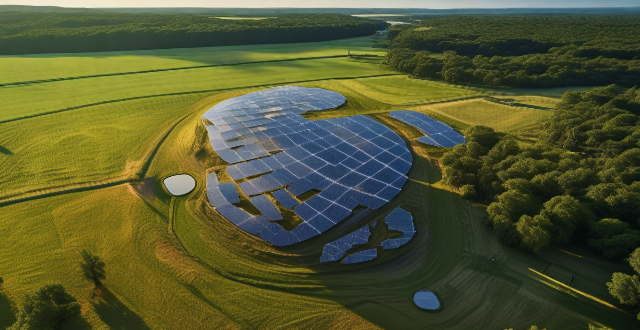
What are the most promising renewable energy technologies for reducing carbon emissions ?
Renewable energy technologies are crucial for reducing carbon emissions and combating climate change. They harness natural resources such as wind, solar, hydro, geothermal, and biomass to produce electricity or heat without emitting greenhouse gases. This article discusses the most promising renewable energy technologies for reducing carbon emissions. Solar energy can be generated through photovoltaics (PV) or concentrated solar power (CSP). Wind energy is growing rapidly due to its low cost and minimal environmental impact. Hydropower is a significant source of clean power but has environmental concerns. Geothermal energy has a high capacity factor but limited availability. Bioenergy helps reduce dependence on fossil fuels but requires careful consideration of land use changes. Wave and tidal energy have immense potential but are still in early development stages. Overall, these technologies offer unique benefits and challenges for creating a sustainable future.

How can individuals contribute to raising climate awareness ?
How Can Individuals Contribute to Raising Climate Awareness? Individuals can contribute significantly to raising climate awareness by educating themselves and others, engaging in community activities, advocating for change, changing personal habits, promoting sustainable lifestyle choices, investing in renewable energy, educating the next generation, volunteering, using their voice, and staying informed and up-to-date. By taking these actions, individuals can inspire others to join the effort to combat climate change.